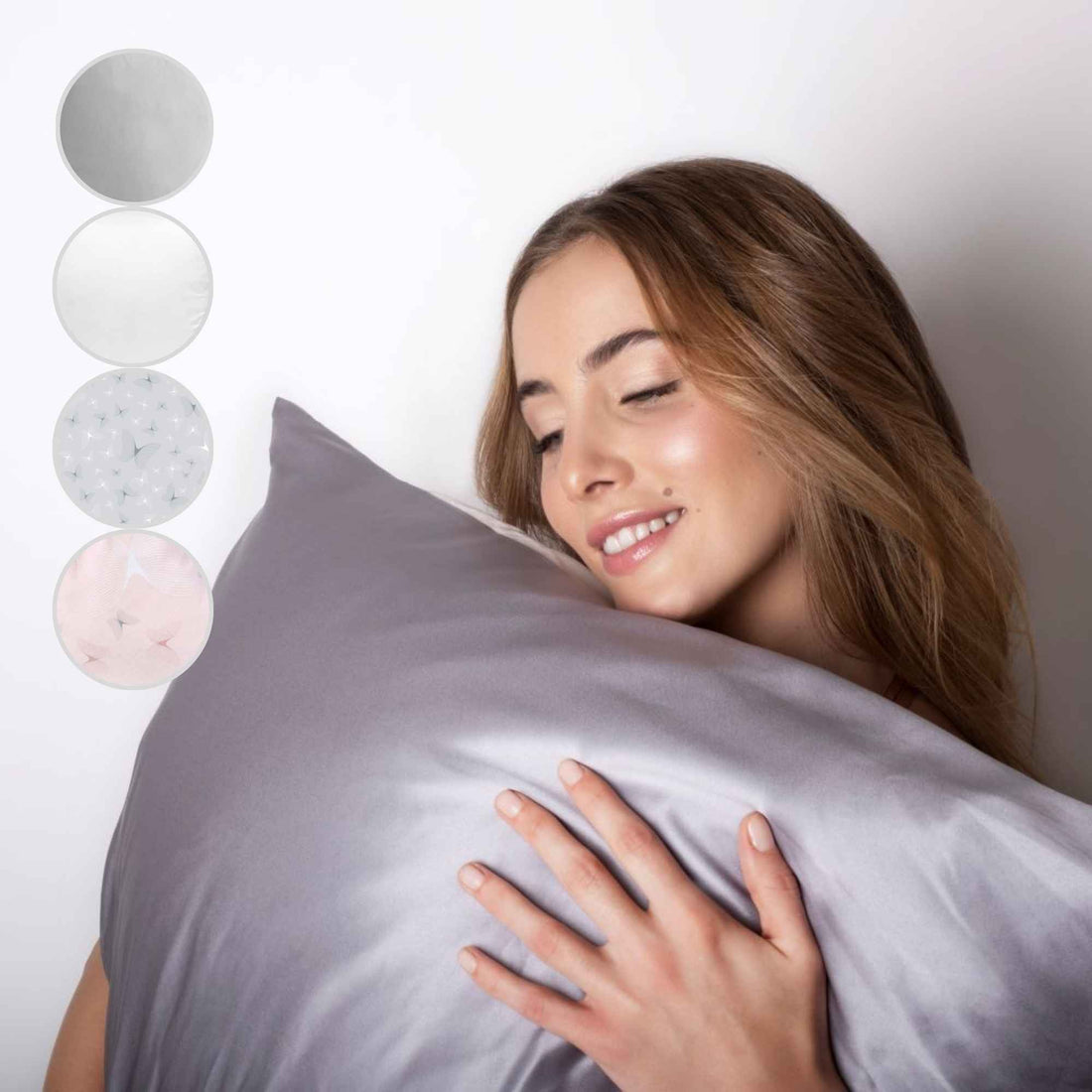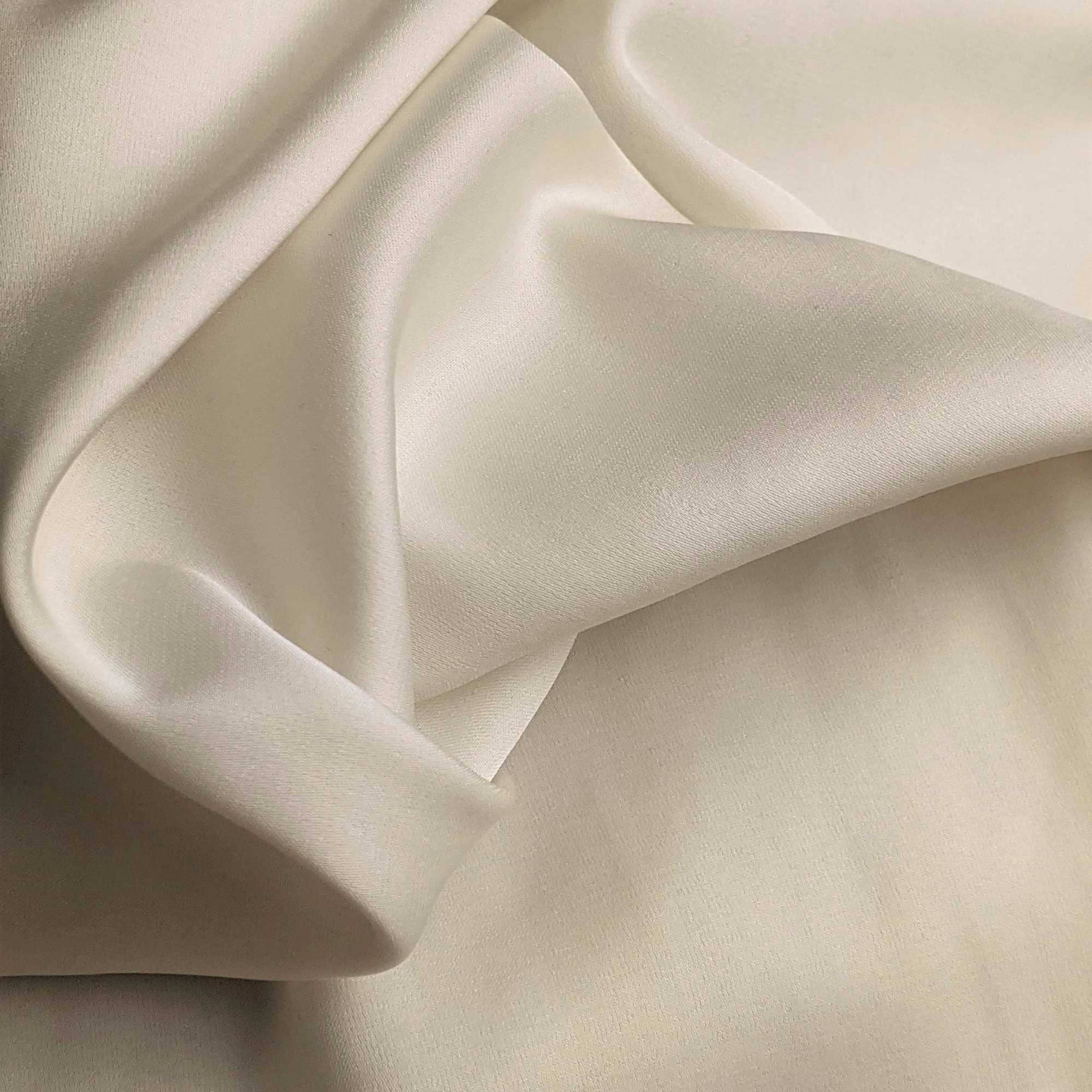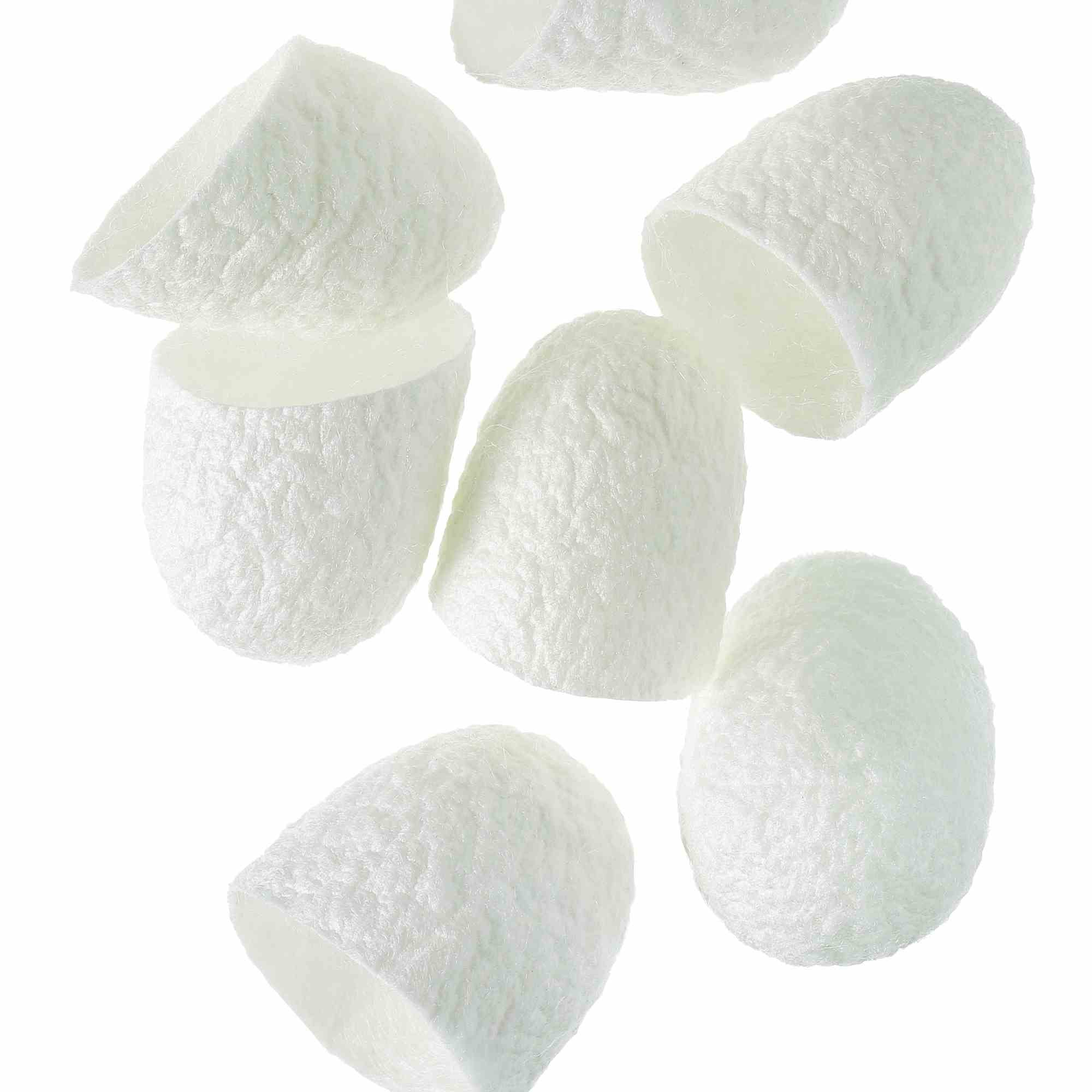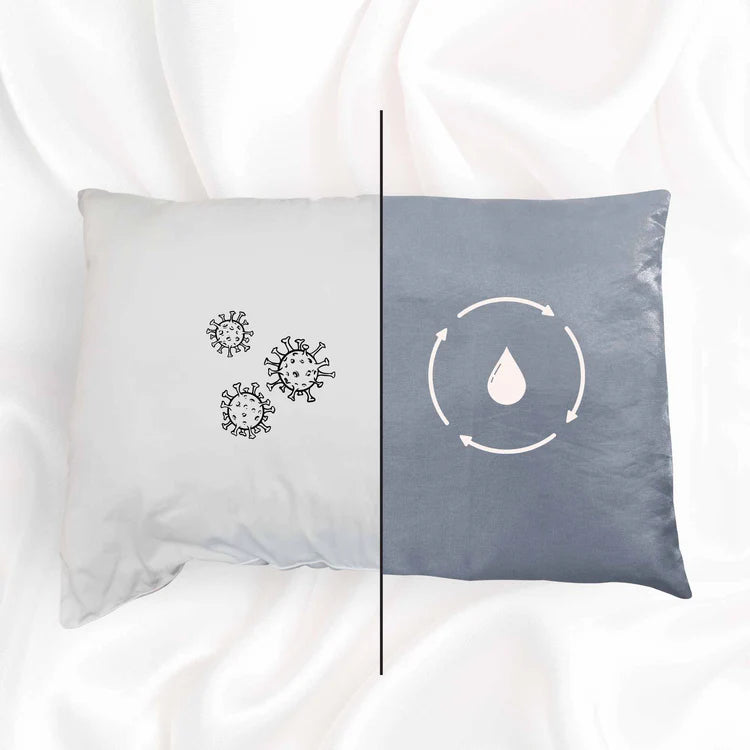Silk comes from the cocoons created by silkworms, before they turn into an elegant butterfly. The silk from the cocoon is recovered, treated and woven to be sold as textile (or for cosmetic cares as the Laboratoires SILKBIOTIC do). Vegetable silk is a misuse of language to generally designate textiles that visually look like real silk, but don't own its properties.
Vegetable silk is a little bit like plant-based meat: it can look like regular meat, but the biological properties aren't comparable.
Do different types of silk exist? Spider silk and bombyx mori silk: similarities and differences
It was also discovered that the silk from some spiders and from bombyx mori, shared several characteristics despite their different origins. Both of them are fibrous proteins, produced by specialized glands. Spider silk is known for its exceptional resistance and flexibility, properties that make it one of the most robust natural fibers. It's mainly made up of fibroin, a protein that's also found in bombyx mori silk. Fibroin, in these two types of silk, is distinguished by its beta-sheet structure, giving a great solidity and a noteworthy elasticity.
Properties of spider silk and bombyx silk
Scientists are closely studying these two types of silk—spider silk and Bombyx silk—due to their exceptional properties. They are exploring possible applications of silk fibers in the medical field, particularly for surgical sutures, cell culture scaffolds, and tissue regeneration materials. In short, despite their biological and ecological differences, spider silk and the silk of Bombyx mori share a common protein base that gives them remarkable physical properties, making them both highly interesting for various scientific and industrial applications.
If silk is of animal origin, then what about "vegetable silk"?
You may have already seen some products on the market labeled as "Made of vegetable silk." But what exactly is vegetable silk? Does it really exist?
No, vegetable silk does not exist. True silk comes exclusively from the silk cocoon. The term “vegetable silk” is a real misuse of language—a marketing trick that unfortunately misleads consumers.
True silk and "vegetable silk" don't share the same properties
Here is an explanatory and comparative diagram of the properties of real silk vs. those of so-called "vegetable silk."
Real silk is hydrophobic, thermoregulating, strong, and helps maintain skin and hair hydration. Natural silk is also antibacterial and dust mite resistant.
So-called "vegetable silk", on the other hand, is made from plant-based fibers that are hydrophilic, more fragile, generally non-thermoregulating, and processed through chemical treatments to convert plant fibers into textile fibers.

To simplify: a plant-based steak may look like a steak, but it doesn't have the same properties!
There are several fabrics sometimes considered "alternatives to silk." Among them are viscose and Sabra (formerly made from aloe vera fibers but now composed of synthetic materials).
Lyocell, sometimes called "vegetable silk"
Another well-known plant is sometimes referred to as "vegetable silk": eucalyptus, which is used in the production of a textile fiber called Lyocell.
Lyocell is made from wood pulp, often eucalyptus, but also oak or birch. Eucalyptus is particularly popular due to its fast growth and low water consumption compared to other trees.
Lyocell is sometimes called “vegetable silk” because of its softness and texture. It is often described as softer than cotton and similar to silk in appearance. Its shine and luster make it noteworthy, as it resembles that of natural silk. Its drape is highly valued, making it a favored material for high-quality clothing and fabrics. However, as you’ve probably guessed, Lyocell may look like silk, but it is not silk!
True silk vs. "vegetable silk": these fibers have fundamentally different chemical compositions
Lyocell, or eucalyptus fiber, does not offer the same benefits for the skin and hair as true silk.
The difference in chemical composition is crucial. Real silk is composed of two natural proteins: sericin and fibroin. In contrast, so-called "vegetable silk" fibers are plant-based polysaccharides (cellulose). These two types of fibers have fundamentally different chemical structures.
Their biological origins must also be considered. Silk comes from the animal kingdom, whereas plant fibers come from plants. Using the term “silk” for plant-based materials can be misleading, as it suggests a similar origin.
Silk production vs. lyocell production
Likewise, the production process is entirely different. Silk is harvested from cocoons, involving a specific harvesting and spinning process. Plant-based fibers, like eucalyptus and Lyocell, are produced through industrial processes that transform cellulose into textile fibers, which is very different from silk production.
Lyocell, like cotton, absorbs moisture and dries out the skin overnight. In contrast, true silk is hydrophobic, allowing skin and hair to stay hydrated all night long.
Moreover, while some properties of plant fibers may resemble those of silk (such as softness, sheen, and drape), they do not possess the specific characteristics of real silk. For instance, silk fabric is renowned for its thermoregulating properties.
The term "vegetable silk": a marketing strategy
The use of the term “vegetable silk” can be seen as a marketing strategy aimed at capitalizing on the luxurious and high-quality image associated with silk. This can mislead consumers regarding the true nature and value of the product.
While materials labeled as “vegetable silk” may share some aesthetic and functional qualities with real silk, their fundamental differences in composition, origin, properties, and production methods make the term "vegetable silk" misleading and inaccurate.But then again, does that mean plant-based steak shouldn’t be called steak either? Food for thought…








